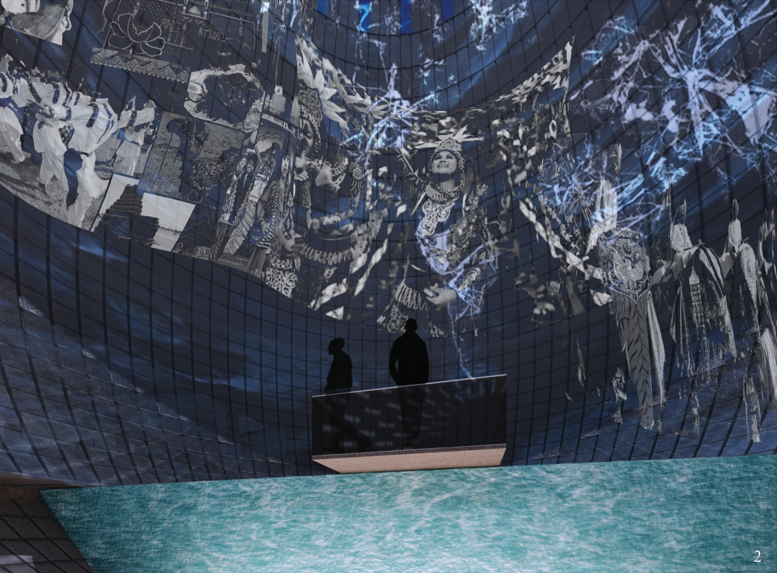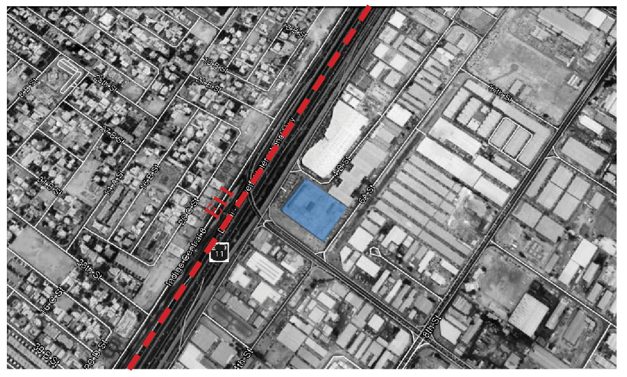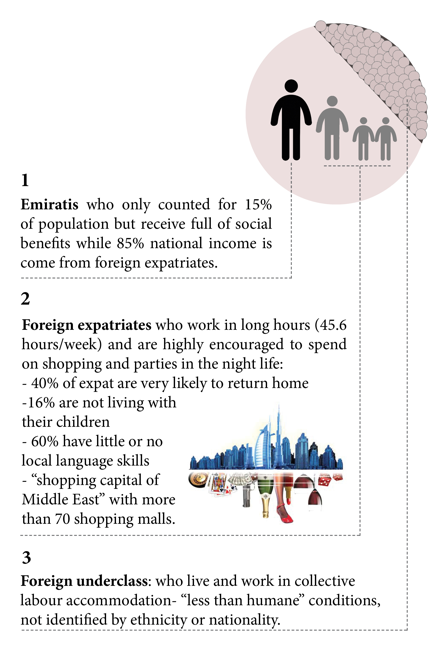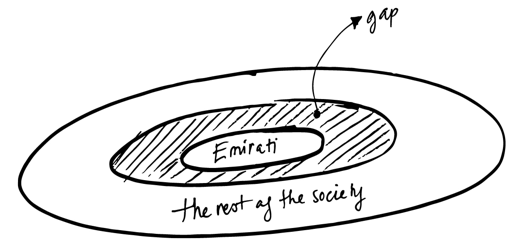[S02] Dubai/ UAE- Place and Identity

This is one of the four design projects from my Master study in 2017- 2018. The brief we received that time was to remodel a shopping mall in Dubai, United Arab Emirati (UAE) with the theme Place and Identity. The most exciting and also challenging part of this project is to identify the identity of a city that is suffering from an identity crisis! This project was, in fact, a preparation for a field trip to Dubai 4 months later when I had an opportunity to examine all of my research and thoughts in reality. That is to say, this whole process was one of the highlights in my Master journey which has opened my eyes to an understanding of the real social impacts of architecture. Three years later, when I have a chance to look back on what I have thought and believed, it somehow gives me an insight into the path I should follow.
- Site Analysis- Dubai and Its Social Context
The selected site is Time Square Center, a shopping mall located on Sheikh Zayed Road or E11, the longest highway in Emirates, linking the two largest cities in UAE, Abu Dhabi and Dubai.


As we all know, the most widely known reputation when it comes to this largest and most populous city in UAE is its fancy and materialistic lifestyle, the result of a magical economic transformation that happened in the 20th century. In the 1930s, Dubai’s economy went into a deep depression since its pearl export was severely damaged by the Great Depression 1930 in the world. However, unlike its neighbour Emiratis, whose economies, until now, have been mostly built only revenues from the oil industry, Dubai released a new innovatively economic strategy with the emphasis on tourism and luxury building hotels and developing real estate. Consequently, in a very short time, there was a giant leap in Dubai’s appearance, which is referred to as a fabulous city that rose from the desert sands. Nowadays, Dubai is the top business gateway for the Middle East and Africa. It is also home to the most ambitious and megaprojects like the off-shore Palm Islands and the World, the inland Dubai Marina, one of the tallest buildings in the world Burij Khalifa, etc.

However, as a consequence of this fast-paced economy, it has led to many social issues in Dubai society, especially in the sphere of social cohesion. When I did some research about the social structure of Dubai, it was very obvious to realize a vast gap in the social stratification as you can see from the graph below illustrating 3 classes in Dubai society:

My primary concern in this project is about social life: along with the flashy life of the riches, there are still many dark corners in this society which is being intentionally ignored by the people there. Therefore, in order to identify the identity of Dubai is, in fact, to address and solve the underlying social issues when a city growing too big and too quickly like a giant construction site. The problem I chose to examine in this project is the growing gap in the social solidarity of Dubai.

